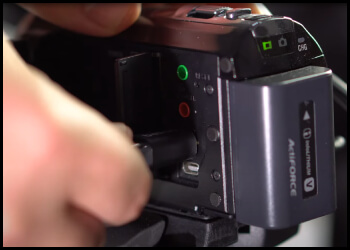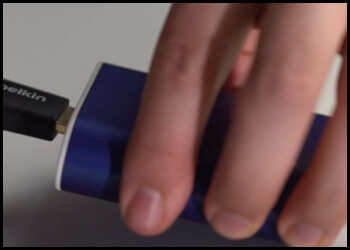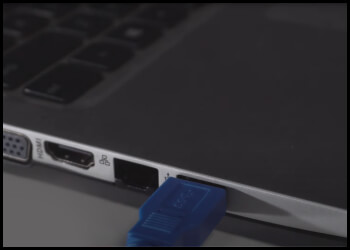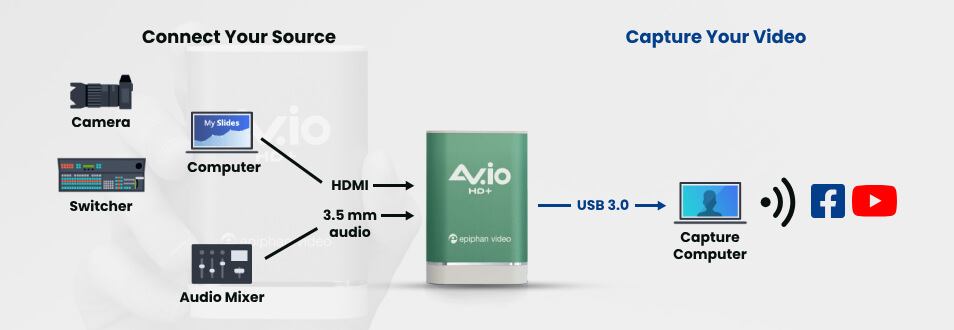- Show results for
- Share
What Is a Video Capture Card & How to Use It? HDMI vs USB. Resolutions, Aspect Ratios, and Frame Rates. Epiphan Capture Cards
Resource Description

Contents
- Introduction
- HDMI or USB?
- What Is a Video Capture Card?
- How to Use a Video Capture Card?
- Resolutions, Aspect Ratios, and Frame Rates Explained
- Epiphan Capture Cards
- AV.io 4K: Capture 4K over HDMI in Flawless Fidelity
- AV.io HD+: Capture HDMI or DVI Video Sources at Resolutions up to 1080p
- AV.io SDI+: Ideal Addition to Your SDI Video Sources
- Conclusion
Introduction
Nowadays, many people livestream and record high-quality videos from their computers. However, most home PCs aren’t equipped with HDMI inputs, and many HD cameras lack USB outputs. If you need to capture HDMI video from a camcorder, or, for example, mirrorless, or other non-USB camera, what’s the solution?
In this article, we will explain what a capture card is and how to use it. In addition, you will learn about the difference between HDMI and USB, as well as resolutions, aspect ratios, and frame rates. You will also find out about Epiphan capture cards.
HDMI or USB?
HDMI vs USB? Which one to use?
If we are talking about video quality, for numerous applications, it is important. For instance, video conferencing in business requires excellent video quality as it is engaging and helps represent you/your company in the best way.
Many cameras use HDMI outputs (not USB) for content transfer. Why? USB 2.0 (and earlier versions) can’t handle the transfer speeds needed for video data streaming.
That’s when a video capture card can be very useful. What is a capture card? Keep reading to find out.
What Is a Video Capture Card?
A video capture card (also called a video capture device) is a piece of hardware that is used for translating the analog video signal of the camera into a digital video format (recognizable by a computer).
It relays a video stream to your computer for processing and also provides support as a pass-through, allowing your video stream to be displayed on a monitor.
How to Use a Video Capture Card?
Here is a simple step-by-step guide!
Step 1

Connect the HDMI camera output to the capture card using the HDMI cable.
Step 2

Connect your capture card to the USB cable (provided).
Step 3

Connect the USB cable to the computer.
Step 4
Power the camera.
Now the computer will see the video capture card as a video input.
Resolutions, Aspect Ratios, and Frame Rates Explained
The video resolution (or frame size, display mode) is the number of pixels (that are displayed horizontally & vertically) contained in each frame. For instance, the 1920x1080 resolution (it is 1080p) creates an image that is 1920 pixels wide & 1080 pixels tall. It is considered the best video resolution for YouTube, for example, and for other purposes as well.
Video Resolution Chart
| Resolution | Name | Aspect Ratio | Pixel Sizes | Description |
| SD (Standard Definition) | 480p | 4:3 | 640x480 | Commonly used in older content & broadcasts. |
| HD (High Definition) | 720p | 16:9 | 1280x720 | Great for general viewing on smaller screens. |
| FHD (Full HD) | 1080p | 16:9 | 1920x1080 | Typical for most present-day content, it offers outstanding detail & clarity. |
| QHD (Quad HD) | 2K or 1440 | 16:9 | 2560x1440 | Perfect for high-quality video & gaming. |
| UHD (Ultra HD) | 4K or 2160p | 1:1.9 | 3840x2160 | Excellent choice for large screens & high-end productions. |
| Full Ultra HD | 8K or 4320p | 16∶9 | 7680x4320 | The highest resolution today. It delivers unmatched detail & clarity for future-proofing content. |
The image aspect ratio describes the proportional relationship between the pixel width & height of this image. For example, people often search for the 1920x1080 aspect ratio (the aspect ratio of the 1920x1080 resolution). The 1920x1080 (1080p) resolution is wider than it is tall. The ratio of its width to height is 16 to 9, represented as the 16:9 aspect ratio.
Common Aspect Ratios
| Aspect Ratio | Use |
| 4:3 | Standard TV (NTSC/PAL) display & non-widescreen computer displays |
| 16:9 | Widescreen (HD) TV displays (1080p, 1080i, 720p, etc.) as well as 4K-capable displays |
| 16:10 (8:5) | Widescreen computer displays & 4K-capable displays |
| 5:4 | Sometimes used in larger format computer monitors |
| 1.90:1 | Digital Cinema Initiatives standard resolution for 4K/2K video projection |
The video frame rate is the measurement of how quickly a number of frames appear within a second. It is also known as frames per second (or FPS).
Common Frame Rates
| Frame Rate | Description |
| 24fps | TV broadcasts, motion pictures, streaming video content, and your smartphone use the standard frame rate of 24 frames per second. Such a speed accounts for a phenomenon known as motion blur, it is an optical effect that makes moving objects look out of focus due to quick movement. At 24fps, there will be a little motion blur, but mostly, things will be clear enough for you to perceive. |
| 30fps | Live TV broadcasts (sports) use 30fps to show movement more clearly. |
| 60fps | With the rise of 4K resolution, more people are experiencing higher frame rates, offering smoother action and stunningly detailed, lifelike visuals, ideal for recording video games. |
| 120fps (and above) | This speed offers smooth slow-motion video and captures fast-paced video game actions (e.g. fighting). Speeds above 120fps require high-speed cameras for natural, smooth footage. |
Epiphan Capture Cards
Epiphan Video offers best-in-class AV hardware as well as cloud services for various applications for lecture capture purposes, live event production, video training, etc. Epiphan capture cards ensure excellent performance. They are rugged and user-friendly. Let’s consider a few popular models in detail.
AV.io 4K: Capture 4K over HDMI in Flawless Fidelity
The AV.io 4K is a great solution for capturing 4K video. All you need to do is connect the HDMI video source to the AV.io 4K, and the capture card to the computer using USB. Mac, Windows, and Linux operating systems will auto-detect the AV.io 4K capture card. No need for driver installation.

BENEFITS
Broad variety of resolutions
The AV.io 4K captures resolutions up to 4096x2160, 4K UHD video streaming at 30fps & 1080p at 60fps. You can either use the video at its original resolution or your AV.io 4K will scale it to what you need.
4K streaming wherever & whenever you need
It is compact and portable. AV.io 4K’s HDMI capture will work flawlessly up to 4K if your computer has USB 3.0.
Ultra-low latency
The device captures HDMI video & audio as it happens. Forget about lags.
Clear audio
The AV.io 4K captures PCM audio over HDMI at up to 24-bit 96 kHz. The 2-channel stereo audio output has automatic resampling at 48 kHz & encodes in 16-bit.
Wide application support
The AV.io 4K is compatible with various popular applications like Zoom, OBS, Wirecast, QuickTime, VLC media player, as well as Windows Camera. You can effortlessly save & upload your content to Vimeo and YouTube.
Rugged housing
With quality materials, this capture card is built to last.
AV.io HD+: Capture HDMI or DVI Video Sources at Resolutions up to 1080p
The AV.io HD+ provides USB plug-and-play simplicity to HDMI sources. Enjoy effortless capturing 1080p video from any HDMI camera/device with minimal latency, bringing in audio through HDMI, the 3.5 mm input (or both).

BENEFITS
Stress-free video capture
Capturing video from HDMI on Mac, Windows, or Linux is as easy as ABC! All you need to do is connect your device to one end of your capture card & the computer to the other. After that, select your device as a source in your software.
Automatic scaling
The AV.io HD+ is designed to automatically adjust the image depending on the software you’re using, ensuring excellent video quality, even when switching between sources.
Compatibility with popular apps
The AV.io HD+ is compatible with any program that accepts USB as a video source, including video conferencing apps (Zoom, Microsoft Teams), and streaming software (OBS, Wirecast).
Tailored to the user’s installation
With the Config Tool, you can set specific EDID for your HDMI input, customize the output resolution, and label each device, making the workflow better for various projects.
Excellent audio capture
Enjoy impressive sound with the AV.io HD+’s high-quality audio capture & more ways to bring audio into your projects.
AV.io SDI+: Ideal Addition to Your SDI Video Sources

The AV.io SDI+ offers USB plug-and-play convenience for your SDI sources, allowing you to effortlessly capture 1080p video from any SDI camera/device with minimal latency, bringing in audio through HDMI, the 3.5 mm input (or both).
BENEFITS
Easy video capture
With the AV.io SDI+, the process of capturing video from SDI devices on Mac, Windows, or Linux is very easy. Just connect your 3G-SDI, HD-SDI, or SD-SDI device to one end of your capture card, and your computer to the other, then select your device as a source in your software. No driver installation is needed.
Size & scale without problems
The AV.io SDI+ will automatically adjust the image based on your software.
Compatibility with various apps
This capture card can be used with any program that accepts USB as a video source: Zoom & Microsoft Teams are great examples. In addition, you can use such streaming software as OBS as well as Wirecast.
Perfect for your installation
The AV.io SDI+ has the Config Tool for setting specific EDID for your HDMI input, customizing the output resolution, as well as labeling each device.
Capturing unmatched audio
The AV.io SDI+ ensures that your content sounds perfectly well with high-quality audio capture and also more ways to bring audio into your projects.
Conclusion
On Prime Buy, besides Epiphan capture cards, you can also get Epiphan Pearl solutions, including Epiphan Pearl Mini, Epiphan Pearl-2 live video production systems (the Pearl-2 supports multicast streaming to an IP TV or a set-top box playlist with the help of SAP (session announcement protocol) when the stream format is MPEG-TS). Epiphan Video Pearl products are reliable and easy to use.
Numerous customers around the world trust Epiphan Systems Inc. Become one of them! Find the best solutions for your application on our website!
